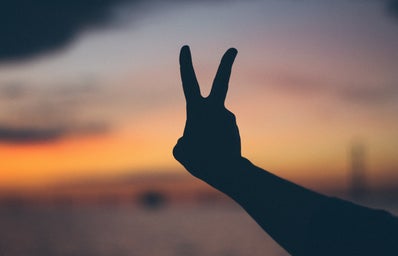Halloween is almost here people!! The days are getting darker, the nights are drawing in and the scariest of spooks are coming out to play- plus a sexy mouse of two, of course. (Yes, we’re still trying to make ‘fetch’ happen Regina.) Here at HCX we’ve been thinking about that one special night of the year where we can fully embrace the supernatural spirit, and wondering: where do all these legends and myths come from? I mean, these supernatural beings allow us to dress up and get blind drunk at Unit 1- surely they deserve some recognition or thanks?!
We spend more time than you might think embracing the ‘paranormal’ in our daily lives. How many have you have sat in front of a box set of The Vampire Diaries? Now, come on, they’re all hot, its nothing to be ashamed of that you know the exact line Damon uses to greet his brother Stefan. Nope… No shame. And who could forget Harry Potter, the worldwide wizarding phenomenon, made famous by Exeter’s very own J.K. Rowling! Teen Wolf, Hocus Pocus, Pirates of the Caribbean, Twilight, It, Paranormal Activity, Annabel, the list goes on.
To that end, HCX has compiled a comprehensive list of the origin stories of some of the most famous supernatural beings that you’ll be seeing out and about on the 31st. No need to thank us, we know we’re fabulous:
1. Witches
Ah, the modern-day, sassy, intelligent, bad-ass witches that we see in film. We’re looking at you, Hermione and Sabrina. But where do these powerful women take their origin? The first mention of ‘witchcraft’ comes in 690 AD in the Old Testament, where witches are denounced as profane heretics, and sexual deviants who practiced black magic. The public were given permission to burn or execute anyone who they deemed a witch. Witches were used as scapegoats for any misfortune that befell human society: bad harvests, sickly or deformed children and lewd or ‘immoral’ sexuality. See the Salem Witch Trials for reference. Charming…
It seems crazy that people would believe this notion, but back then, with no science to explain anything, witchcraft seemed like the obvious malign cause.
The word ‘witch’ flies in from Old English- (hahah, see what we did there). The earliest record, according to the Oxford English Dictionary, refers to a male sorcerer, practicing magic, or “Wicca”, a neopagan religion. Over the centuries, witchcraft’s masculine associations melted away, thanks in no small part to the historical persecution of many women believed to be witches. Witches were perceived as evil temptresses, old hags, appearing young and beautiful and putting spells on young men to seduce them. Ahem… Saucy. Not.
The negative image and fear surrounding witches disappeared with the advent of sciene and Hollywood. The TV show Bewtiched, gives us the glamorous, sexy and benevolent form of witch that we see today, and we certainly wouldn’t be without it!
2. Vampires
HCX knows we all look like this when a mere peasant dares to wake us from a well deserved nap. However, we’re not so keen on the whole draining everybody’s blood thing, thanks though. So, Damon, Stefan, Edward Cullen, we come to you. How did we get from the demonic idea of draining the life and blood from an innocent person, to the sexy and *shudders* sparkling, idea of pop culture vampires, who we, ultimately, love to loathe?
The most famous vampire, of course, is Bram Stoker’s sophisticated, suave and elegant Dracula. Although many perceive this as the origin for the sexualized human vampire we have today, it actually stems from John Polidori’s novel, The Vampire, written slightly earlier. The vampires most people are familiar with, (such as Dracula, or Polidori’s Vampire), are revenants — human corpses that are said to return from the grave to harm the living, seducing beautiful women in order to drain their blood. These vampires have Slavic origins only a few hundred years old. But other, older, versions of the vampire were not thought to be human at all but instead supernatural, possibly demonic, entities that did not take human form.
The belief in vampires stems from superstition and mistaken assumptions about postmortem decay. The first recorded accounts of vampires follow a consistent pattern: Some unexplained misfortune would befall a person, family or town: disease, drought or death. These misfortunes, for which there was not an obvious cause were blamed on vampires. Vampires were an easy answer: unable to walk in the sun, drawn to kill by draining blood, the supposed source of disease in most historical periods.
Etymologically speaking, the word vampire comes from the French, meaning ‘vampirism’ or ‘to drain of blood’. What is most interesting, though, is that Dracula is actually derived from the word “Dragon”.
So Edward Cullen, how do you feel being likened to a sparkling fairy? Oh, sorry, our bad, we definitely meant to say Dragon. Yep..
3. Werewolves
Here, we come to the Vampire’s age old ‘enemy’- the chunky “I’m so big”, “Do you even lift?” Werewolf. Seen in the likes of Teen Wolf, X-Men, (Wolverine counts right?), Twilight, and huddled around chanting “E, U, RFC” at Wednesday TP, these creatures are unforgettable.
But has the idea of a Werewolf always been so attractive? Were they always this muscly, and, frankly, big-headed presence? The answer: No. Absolutely not. Werewolves, also known as lycanthropes, are legendary shape-shifting humans. As the name suggests, the shape these creatures take on is that of a wolf. Throughout history there are records of the trials of confessed or accused werewolves. In fact, perceived werewolves were hunted, questioned and executed in much the same way witches were, accused of stealing game, serial murder, unexplained pregnancies, and even rape.
The oldest story of a werewolf descends from Ancient Roman myth. Ovid’s Metamorphoses, written in 1 A.D, told of King Lycaon- the originating source of the name Lycanthrope- who served human meat to the Gods at dinner, thereby offending them. Not gonna lie, we’d be pretty offeneded and freaked out too! Jupiter him by transforming Lycaon into a werewolf. In his werewolf form, he could continue his demonic ritual, killing and eating humans, with less offense.
Still want a Werewolf boyfriend? Nah, we thought not….
4. Frankenstein
For the sanity of every English Literature student out there, let us just say, “Frankenstein” is NOT the monster. Years of pop culture and Hollywood legend has given this being the name of his creator, Victor Frankenstein, a Swiss medical Student.
Originating from Mary Shelley’ 1816 novel, written late one stormy night, on the shores of Lake Geneva, the legend of Frankenstein has become a symbol of Halloween. Many believe Frankenstein’s act of creation- bringing to life his Creature- was one of mad science. It is actually far more complicated than that. Out of a selfish struggle between power and benevolence, Frankenstein explores the idea of Galvanism, toying with creating a being from dead human body parts. His selfish, power hungry nature wins out, and he brings this grotesque Creature to life. Upon seeing how ugly it is, Frankenstein scarpers, leaving the initially benevolent and trusting Creature to be tortured, rebuffed and mocked by the human population. Only after this brutal baptism of fire does he start to seek revenge, pillaging and murdering.
So, who is the real Monster in Frankenstein? The Creature, turned evil by circumstance? Or his selfish creator? Wow… This got deep quickly.
5. Mermaids
The mermaid hype is everywhere this year: mermaid bagels, mermaid blankets, mermaid cakes, mermaid hair, mermaid toast… Trust us, we’ve seen it all! But the origin of this mystical and beautiful idea of a half woman, half sea creature holds a deadly secret that you won’t find in any of these sweet treats.
Mermaids or sirens, typically beautiful young women, were said to lure sailors onto the rocks with songs, so that they could kill them, and eat their heart to remain young and beautiful. We mean, that’s one hell of a beauty routine. Grim.
The first stories appeared in ancient Assyria, where the goddess Atargatis transformed herself into a mermaid out of shame for accidentally killing her human lover. How that happens, we don’t know. Mermaids are sometimes associated with perilous events such as floods, storms, shipwrecks and drownings. In other folk traditions, they can be benevolent or beneficent, bestowing boons or falling in love with humans. *Lights! Camera! And… Cue The Little Mermaid and Pirates of the Caribbean.*
6. Ghosts
Who hasn’t seen that famous scene in Ghost where Demi Moore is at her pottery wheel, with her ghostly (no, really?!) lover? It’s iconic, sexy and not to be missed! But this idea of a benevolent, humanoid ghost was not always how they were perceived in ancient myth or legend!
Ghosts were a regular feature in Ancient Rome. Thought to be created at time of death, they took on the memory and personality of the dead person. They traveled to the underworld, where they were assigned a position, and led an existence similar in some ways to that of the living. Relatives of the dead were expected to make offerings of food and drink to the dead to ease their conditions. If they did not, the ghosts could inflict misfortune and illness on the living.
Roman Catholic tradition later picked up on this idea of a ghostly soul and spirit, specifying a certain day- The Eve of All Hallows– to glorify and remember the souls of the dead and especially of dead Saints. Over the years, human myth and pop culture has mystified, and commercialized this day… You guessed it: it’s Halloween!
HCX hopes you have a spooktastical Halloween, filled with sweets, alcohol, and maybe a sexy/scary costume or two- whatever takes your fancy!

